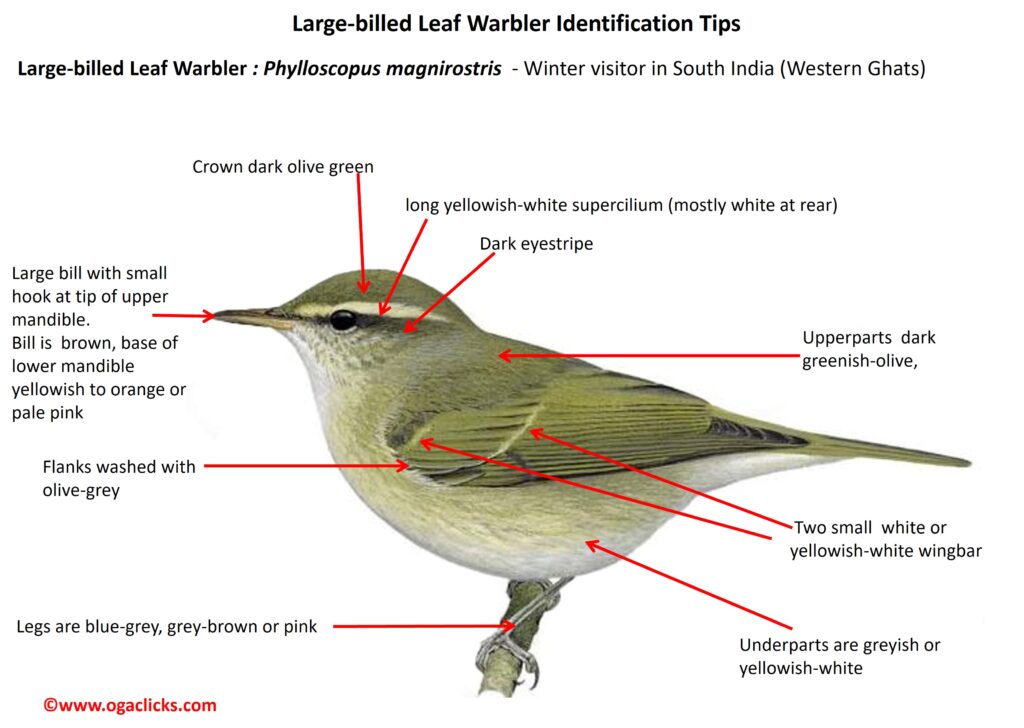
Large-billed Leaf Warbler Phylloscopus magnirostris
Etymology:
- Phylloscopus : Greek word phullon – leaf; skopos – seeker
- Magnirostris : Latin word Magnus – Large; Rostrum – Bill
Distribution : Summers in Kashmir eastwards in Himalayas up to Arunachal Pradesh. Winter visitor in South India (Western Ghats)
Details : Size of 12·5–13 cm; wt. of 11·5–13 g. It is a large, stocky dark greenish leaf-warbler with prominent supercilium. The large bill may have small hook at tip of upper mandible. It has conspicuous, long yellowish-white supercilium (mostly white at rear) and long and broad dark eyestripe. The cheek and ear-coverts are mottled yellowish-white and olive. The crown and upperparts are dark greenish-olive, white or yellowish-white on wingbar on tips of greater upperwing-coverts and (less prominently) on tips of median coverts. The flight-feathers and tail feathers are with bright green edges, outer two rectrices are brown with narrow white tips and edge of inner webs. It is greyish or yellowish-white below, flanks are washed with olive-grey. The iris is dark brown; bill is mostly brown, base of lower mandible is yellowish to orange or pale pink; legs are variably blue-grey, grey-brown or pink. Both the sexes are alike. The juvenile is like adult, but upperparts are browner or olive-brown, breast greyer and streaked with yellow.
Habitat: It breeds in evergreen forest, mostly birch and silver fir, and rhododendron, usually near streams or rivers, also in willow thickets, edges of cultivation, wooded ravines and open areas in mixed or deciduous forest. It is found from 1800–3700 m. In non-breeding season found in evergreen forest and around large shady trees at lower elevations, down to sea-level.
Food habits: It eats small insects and larvae. It is solitary. It forages mostly in upper canopy and along tree branches, in foliage or undergrowth.
Breeding habits: They breed in May–Aug/Sept. They are territorial. The nest is a ball of loose grasses, moss, plant fibres, maidenhair fern stems and animal hair, placed beneath fallen tree, rock or among roots of tree, under overhanging bank or in tree hole. They lay a clutch of 3–5 eggs.